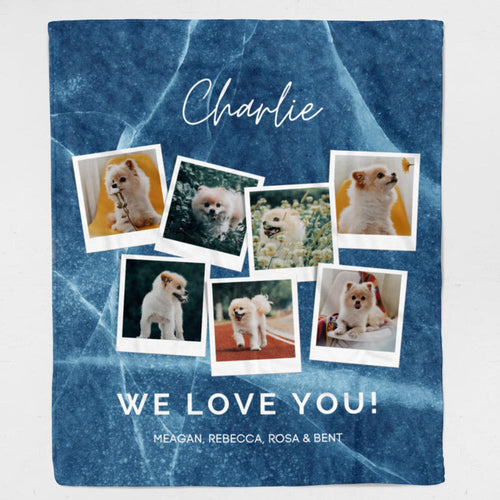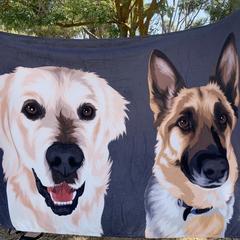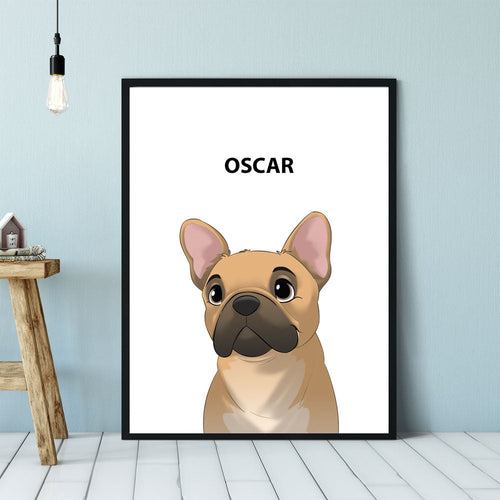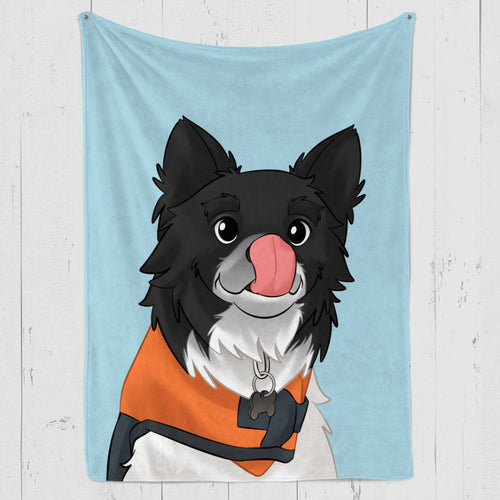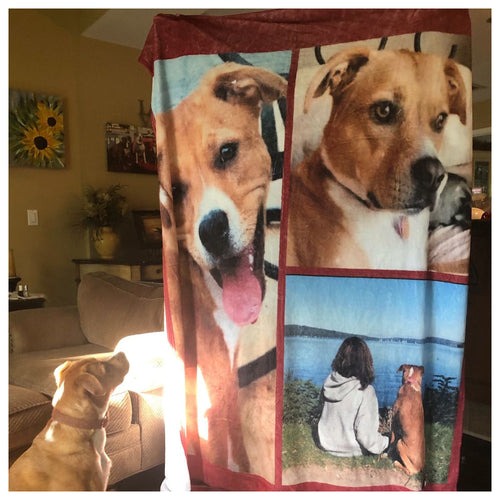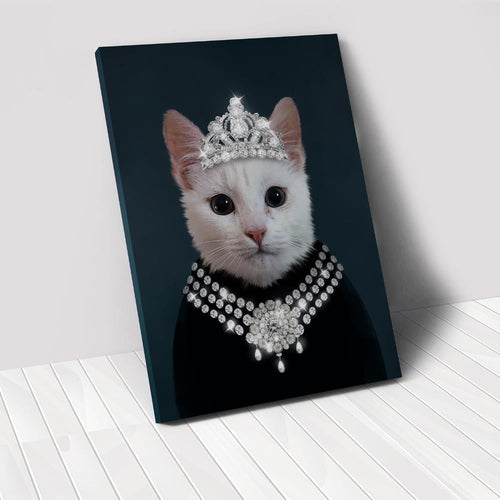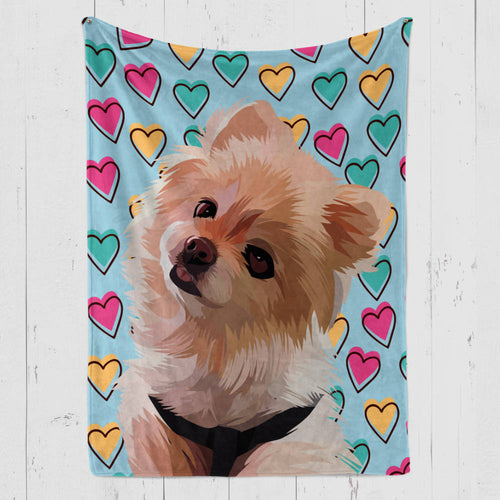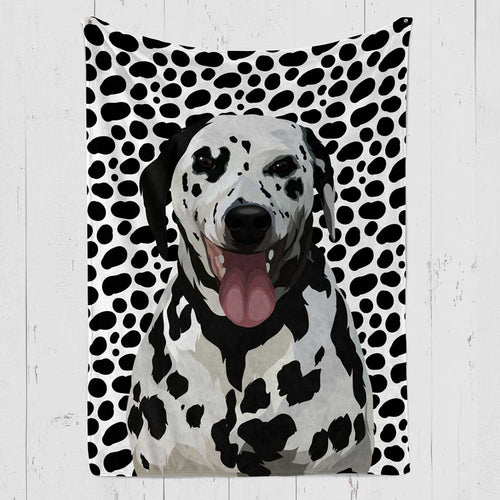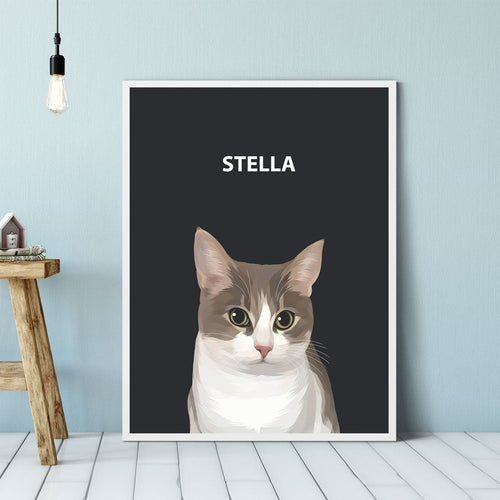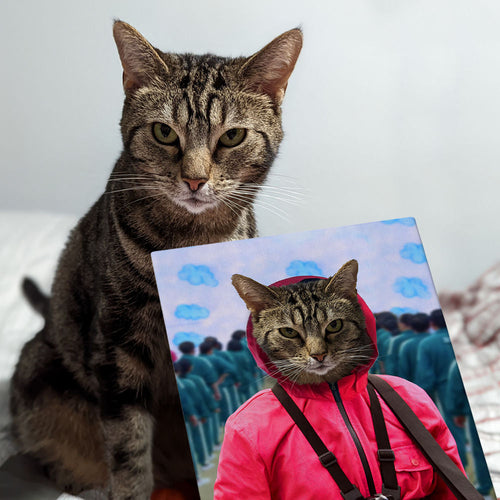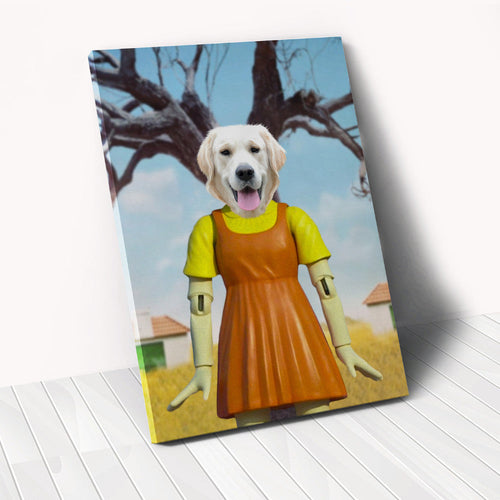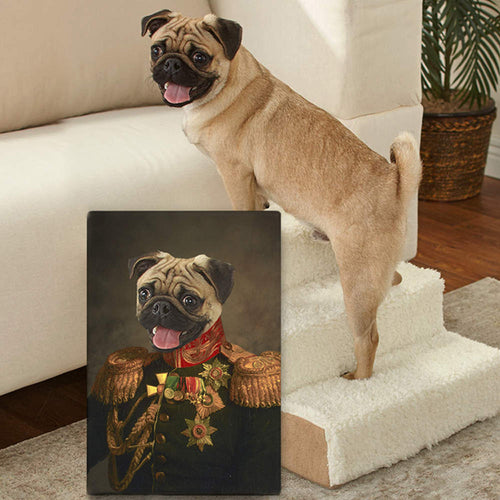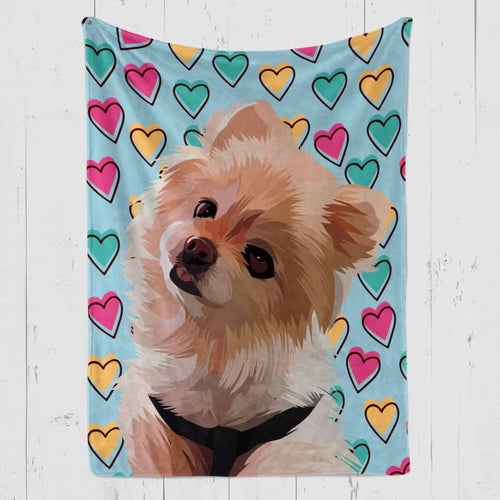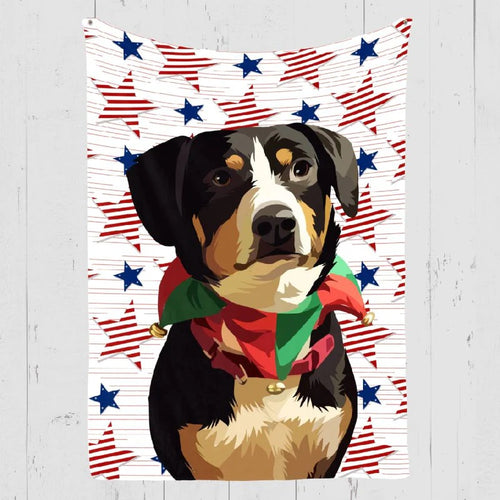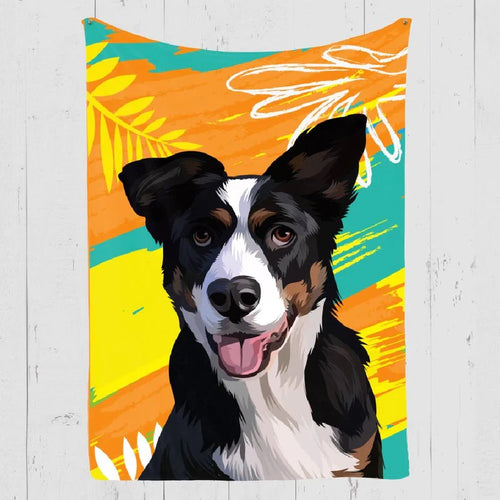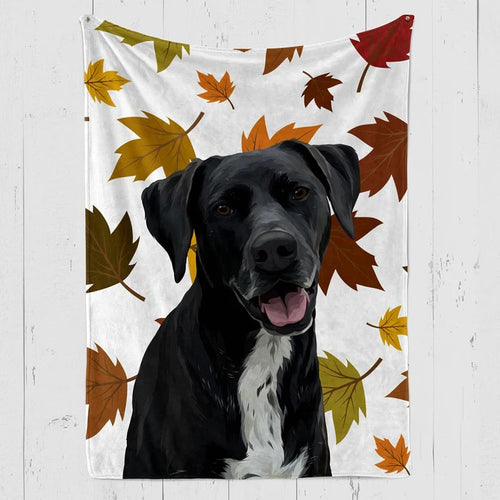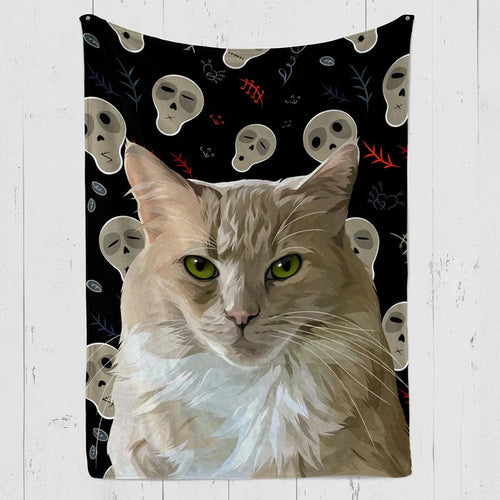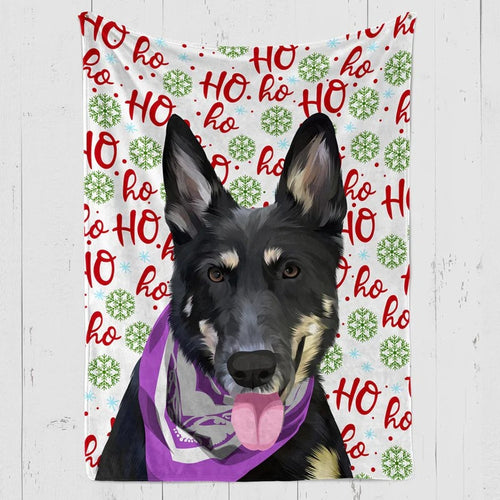
Do you love dogs?Are you looking for a new furry friend to add to your family - and maybe even a new addition for your four-legged best friends? If so, then this article is for you. In it,we have outlined which dog breeds start with L.
We also threw in a few other fun facts and some cool pictures of all the dog breed that starts with l to make your time reading more enjoyable. So without further ado, buckle up and get ready to learn some new information about L breed dogs!
1. Labrador Retriever :

This dog is among the most popular dog breeds in the world, loved by people of all ages. This brown and white long haired dog is an extremely intelligent breed, but can be stubborn and you may need to teach them commands as it's an independent breed.
It originated in Britain from the cross-breeding of the St. John's Water Dog and Irish Setter. But other breeds such as Collie, English Springer Spaniel, Shetland Sheepdog and Whippet also contributed to its development.
The Labrador retriever was first exhibited at a dog show in 1899 by fisherman Charles Otis Bradshaw of North Middleton, Newfoundlandshire bringing fame to this adorable dog.
This very popular dog l breed loves their people! They're gentle, kind-natured animals who would love being around your family.
Breed Stats
- Group: Sporting
- Height: 22.5 to 24.5 inches (male), 21.5 to 23.5 inches (female)
- Weight: 65 to 80 pounds (male), 55 to 70 pounds (female)
- Energy Level: Active
- Physical Characteristics: broad head, drop ears and large, expressive eyes.
- Lifespan: 10 to 12 years
- Color: Black, Chocolate, Yellow
- Shedding: Twice a year, in spring and fall
- Bark: Moderate
2. Lhasa Apso:

This is a very clean looking breed, resembling a fox terrier with its bushy tail and beard-like fur.
It originated in Tibet where it was used as a watchdog due to its close attention span and good hunting skills. Its name was given to it by Tibetans, who called the dog "Apso" which meant tiger watcher.
The breed is extremely independent but has a good sense of humor and will get along with most people and other animals. Lhasa Apso's are super active dogs, requiring a lot of activity. They can get along well with other animals and children but require an owner who can be firm around them for their own protection. They are extremely energetic and will keep you entertained.
They tend to be very curious animals and love acting silly. They are a playful breed and love to run, however they can be moody. They do well in warm climates but the opposite is true for cold ones.
Breed Stats
- Group: Non-sporting
- Height: Males 10 - 11 inches (25 - 28 cm); a little less for Females
- Weight: Males 13 - 15 pounds
- Energy Level: Calm
- Physical Characteristics: Fairly small
- Lifespan: About 15 or more years.
- Color: black, red, dark grizzle, golden, honey, parti-colour, sandy, slate-coloured, smoke-coloured or white.
- Shedding: Little to no shedding
- Bark: Frequent loud barks
3. Leonberger:

Leonbergers originated in Germany where they have been used as cattle dogs and watchdogs due to their size and strength. They are also used for hunting and herding.The name Leonberger comes from its place of origin, the Leonberge mountain range.
This dog breeds that start with l weighs about 100 pounds and sports a shaggy coat that resembles a lion's mane. It is a very friendly dog that loves people, but does not like other dogs or cats. It was named after the city of Leonberg in Germany where it was discovered in 1882 by Fredrick I, Grand Duke of Baden.
This dog amongst the other dog breeds start that with l, had dropped in popularity over time, until it was brought back to life through a breeding program in the mid-1980s after an Austrian shepherd and his dog found their way into a neighbor's garden.
Grooming them can be easy as they are good with children but very reserved around strangers or other animals as they can display aggression during such situations.
Breed Stats
- Group: Miscellaneous
- Height: 28-31.5 inches (male) 25.5-29.5 inches (female)
- Weight: 110-170 pounds (male) 90-140 pounds (female)
- Energy Level: Moderate
- Physical Characteristics: Tall body and drop ears
- Lifespan: 7 years
- Color: Yellow, Red, Reddish Brown, Sandy
- Shedding: Twice a year
- Bark: Rarely
4. Löwchen:

Normally, Löwchen means lion cub but since this is German it means little wolf cub. This breed looks like a smaller version of the German Shepherd and is very similar to the Spanish Mastiff.
Löwchen's were originally bred by German nobility for the purpose of protection but friendly dogs can still be found today. They are very loyal dogs who tend to bond with one person and not be too fond of strangers.
Amongst the dog breed starts with l, this breed needs exercise requirements often as they love to run at full speeds. They are larger than terriers but smaller than German Shepherds, making them ideal for apartment livings, or anyone looking for a dog that's energetic yet compact.
Breed Stats
- Group: Non-sporting
- Height: 12-14 inches
- Weight: 15 pounds
- Energy Level: Moderate active
- Physical Characteristics: a full mane and plumed tail
- Lifespan: 13-15 years
- Color: chocolate and apricot, chocolate and cream, gold, sable, black and tan, blue and cream
- Shedding: Very less
- Bark: Frequent
5. Lakeland Terrier:

The Lakeland Terrier is a breed of dog that has been present in the Lake District region of England, where it assumed its current and well respected form. It is a working terrier, originally used by shepherds to drive off foxes.
This dog breed starting with l is also the guardian of cattle and sheep. The Lakeland Terrier's coat can vary from solid black through fawn, white or gray with tan points, indicating where the sheep in question was kept. Some individuals have been known to have patches of pure white on their shoulders and even on their face as well as some having a black muzzle and tail. The breed weighs from 14 to 20 pounds. The coat is short and either smooth or rough.
Although this dog is considered a working terrier, it is also used as a companion dog. They make great watchdogs as they keep their vocal cords from being damaged.
Breed Stats
- Group: Terrier
- Height: 14.5-15 inches (male) slightly smaller (female)
- Weight: 17 pounds (male) slightly smaller (female)
- Energy Level: Active
- Physical Characteristics: small terrier with an impish and assertive disposition
- Lifespan: 12-15 years
- Color: black and tan, blue and tan, red, wheaten, red grizzle, liver, blue or black
- Shedding: Low rate
- Bark: A lot
6. Lancashire Heeler:

The Lancashire Heeler is a hardy working dog breed that originated in the Lancashire region in England. Its name comes from its early days as a heeling dog. This breed of dog was used to herd sheep because of their size and strength. It has since been an excellent choice for working as a guard and retriever, and performing various herding jobs such as rabbit hunting, fox hunting and even bear chasing.
The Lancashire Heeler is naturally good with children because it has been used as a companion dog to many families over generations, but it can be rather timid with other animals so it is not recommended for homes with any pet animals other than small dogs or cats.
Breed Stats
- Group: Herding
- Height: 10-12 inches
- Weight: 9-17 pounds
- Energy Level: Medium to High
- Physical Characteristics: Sturdy built, slightly rectangular shape
- Lifespan: 12-15 years
- Color: Black and tan
- Shedding: High level
- Bark: High
7. Large Munsterlander:

The Large Munsterlander was developed in Germany from a cross of the Irish Water Spaniel with pointer and setter breeds. The Large Munsterlander is very loyal and is the best friend of its owner. It has a smaller stature than other dogs, but is just as sturdy with an ideal weight of 50 pounds and a height of twenty-four inches at the shoulders. It has a muscular build and a long tail that is feathered with black on the tip.
A keen hunter, it can also be used for tracking due to its great sense of smell. It has been used for many different purposes including as a poacher's dog. Because of its great sense of smell the Large Munsterlander can be a great watchdog, but it is not very friendly to strangers and other animals such as cats.
A very good breed of dog l for families with children, it loves to be around its family and enjoys playing with them. It does not do well when left alone for long periods of time. Because of its medium sized black dogs, it makes a good guard or companion dog for larger homes and their grooming becomes favourable and easy.
Breed Stats
- Group: Gun dog
- Height: 23 - 25.5 inches
- Weight: 50 - 70 pounds
- Energy Level: High
- Physical Characteristics: Muscular and athletic
- Lifespan: 12-13 years
- Color: Blue, black and white
- Shedding: Moderately
- Bark: Occasionally
8. Leopard Cur:

The Leopard Cur is an oriental breed that can trace its roots back to ancient times. It was used in Asia as a hunting dog or for guarding livestock due to its great sense of smell. In Germany this breed was originally used for hunting boar, foxes and hares but it has been bred for the purposes of hunting smaller game such as roe deer, wild boar and hare.
Leopard Cur's are extremely confident dogs that love to please their master. They crave being around their loved ones and will provide great protection to them if necessary. Because of this, they will put up with other animals living in the pet home. The Leopard Cur is a solitary dog but can bond with its owner very quickly.
The soft and silky coat of this breed make it ideal for people who live in hot climates or are exposed to inclement weather such as rain. They are freshwater dogs and love swimming, however it is important to make sure that they do not become overweight because of this habit.
Breed Stats
- Group: Hunting
- Height: 22-26 inches (male) 20-24 (female)
- Weight: 50-95 pounds
- Energy Level: Active
- Physical Characteristics: Strong, tall, large head, drop ears
- Lifespan: 12 to 15 years
- Color: Yellow, Red, Black, Brindle
- Shedding: Light to moderate
- Bark: Low
9. Lagotto Romagnolo:

The Lagotto Romagnolo is used in Italy to track truffles due to its acute sense of smell. It has been bred for centuries and is a natural swimmers. The Lagotto Romagnolo, from the dogs that start with l, is a close cousin of the Poodle and the two breeds may even be cross-bred.
Because it tracks down truffles, it can be difficult to train because it will easily get distracted by them. This breed is also very sensitive and should not be mistreated or abused. If you plan on getting one, then you will have to dedicate plenty of time and attention if you expect it to do well as your companion dog or hunting dog.
Breed Stats
- Group: Sporting
- Height: 17-19 inches (male) 16-18 inches (female)
- Weight: 28.5-35 pounds (male) 24-31 pounds (female)
- Energy Level: Active
- Physical Characteristics: Wooly curls, beard, whiskers
- Lifespan: 15-17 years
- Color: white or white orange, white brown or brown with white, brown roan, brown and tan and finally brown
- Shedding: Rare
- Bark: Frequent
10. Lupo Italiano:

The Lupo Italiano originates from Italy and was bred to hunt wolves. This breed is the cousin of the "Italian Wolf Dog" or "Leonberger" (not to be confused with the Leonberger). Like its cousins, it works very well as a herding dog and livestock guardian because of its protective nature, but does not do well around smaller pets such as cats or dogs unless they are raised together since birth.
They are very loyal to their family and love participating in any activities that the family is doing. They are also excellent watch dogs and will bark at anything suspicious that they encounter. Because of this, it is important to make sure that you keep them on a leash when outside as they can be difficult to control if you allow them to roam around freely.
The Lupo Italiano is not good with children unless raised together from a young age as the dog will not tolerate being mistreated by children and may act aggressively when it feels threatened by them. It also does not do well around other pets such as cats or small dogs, so it is best kept for homes with no animals other than larger dogs.
Breed Stats
- Group: Wolfdog
- Height: 24-28 inches(male) 23-26 inches (female)
- Weight: 70-90
- Energy Level: High
- Physical Characteristics: Strong jaw, black lips, sturdy body, thick tail
- Lifespan: Up to 16 years
- Color: Gray, red, cream, dark saddleback, solid black; white
- Shedding: Seasonal
- Bark: Rare
11. Luzerner Laufhund:

This dog was originally raised by farmers for herding cattle and would have been used as a fear-inducing weapon against straying cattle. It displays characteristics of a cattle dog from the beginning of time.
It has a black coat with brown or white markings, a small head, and compact muscular body that is ideal for running. The Luzerner Laufhund also has brown eyes and thick fur that helps it to cope with cold temperatures.
The breed does not tolerate being alone for long periods of time so they are better suited to active households.
The Luzerner Laufhund is courageous and will guard its family if it feels threatened, but is usually not aggressive unless provoked severely. It is good around children and smaller pets but does not do well with larger dogs or cats.
When it is first brought home, the Luzerner Laufhund will always be on the leash so it doesn't get lost. It also has very sensitive ears so ear protection must always be worn when exercising or having a nice time outside in cold weather. The dog can also get overheated easily and should be taken inside during hot weather.
Breed Stats
- Group: Hunting
- Height: 35-40 cm (female), 35-40 cm (males)
- Weight: 35-55 pounds
- Energy Level: Medium
- Physical Characteristics: Small head, muscular body
- Lifespan: 12-14 years
- Color: White, grey, black, tan
- Shedding: Low to moderate
- Bark: Frequent
Frequently Asked Questions
What are the characteristics and temperament of the Labrador Retriever breed?
The Labrador, the letter L dog, is a British breed renowned for its outgoing nature and simplicity in training. They are great for households with kids or other pets because of their intense loyalty to their owners. These dogs have dark brown eyes that sparkle in the light, waterproof double coats, and black noses. Although they have historically been used as hunting or retrieval dogs, these dogs don't require this much stimulation to be content.
Are Labrador Retrievers good family pets?
The Labrador Retriever is a pleasant and clever dog. They are highly well-liked as family pets since they grow up with the kids and develop used to their level of enthusiasm. They are terrific with kids because they enjoy playing and have a sense of humor that is frequently compatible with the kids they grew up with.
How do I properly train and socialize a Labrador Retriever?
Exceptionally intelligent and rapid learners, labrador retrievers. They will always want to please their owners, but to reach their full potential they require specialized training and socializing. When they are little, this is when it is easiest to do. It is advised that you socialize your puppy as soon as you can because doing so will increase the likelihood that it will develop into a well-mannered adult dog who can get along with other canines of its species in normal circumstances. The dog will bark at strangers if no one claims it and may even act aggressively if it feels threatened.
What is the history behind the Lhasa Apso breed?
This breed originates from Tibet and was bred for many years as a companion dog. They were kept by monks and used to assist in herding animals. They were also raised as watchdogs because of their alert nature and small size. The Lhasa Apso is very alert and active. They are loyal to their owners and always want to be around them, so they are best suited to households where someone is around all the time. Because of this, they tend not to do well if left alone in the backyard for long periods of time or if they are abandoned when their owners have to travel for work since they need someone around that will not leave them alone for long periods of time.
How should I groom and maintain the long coat of a Lhasa Apso?
The long coat of the Lhasa Apso is designed to protect them from the harsh weather in their native country. They generally have thick hair that mats easily if not tended to properly. It is best to brush their coats at least once a day to prevent knots and tangles. Trim their nails every few weeks and check for any signs of skin irritation or infection because they tend to be prone to these due to their fur coat.
Are Lhasa Apsos suitable for apartment living?
Lhasa Apsos do not do well in apartments due to their high energy levels. They are active dogs that need a lot of room to stretch their legs and run. They also have a high prey instinct that needs to be exhausted daily. As puppies, they are relatively small, so it is important for them to have enough space to move around or their strong legs may result in them jumping from sharp ledges or being injured when they get too excited and run into things.
What are the main traits of the Lakeland Terrier's personality?
Ans: The Lakeland Terrier is a very lively and friendly breed with a bold and outgoing personality. They are highly intelligent dogs with a tendency to try to get their way by using their charm. They are great with children and other animals but they do have high prey instincts, so it is important that they don't grow up around small cats or other small pets because they may accidentally hurt them. These dogs are generally good for families as long as the children are taught from an early age how to treat animals properly and if there will be consequences if they don't use caution around the dog.
How much exercise and mental stimulation does a Lakeland Terrier need?
Lakeland Terriers are extremely energetic dogs that require a lot of mental and physical stimulation to be happy. If they spend enough time playing and exercising outside each day, they can adjust to apartment living. Due to their high amounts of activity, they will always want to play or run, therefore it's crucial that they have sturdy dog toys and enough area to burn off energy. The breed also requires a lot of cerebral exercise requirements, preferably in the form of obedience training or other intellectually stimulating pursuits.
Are Lakeland Terriers compatible with households that have other pets?
Lakeland Terriers are great with other pets as long as they have been properly socialized around them. They have a prey drive that makes it difficult for some adult cats or small dogs to survive, so these must be separated from the Lakeland Terrier during early puppyhood. The dog should also be supervised around other animals and prevented from playing roughly with them or it may injure them. This is one reason that many people choose not to own a Lakeland Terrier if they have small pets in their household since they tend to be too rough when they play.
Which are the white and brown dog breeds that start with L?
The white and brown dogs breeds that start with L are Labradors and Lakeland Terriers.
Conclusion
L breed dogs are bred to be friendly and loving, but also protective of their owners and family. They do well with kids if trained properly but will try to tell you if they feel threatened. L breeds love to run outside on nice days and are very playful too.
They are an all natural dog breed, so their needs vary from dog to dog. Some dog breeds l are ones that you will want to keep indoors as they can be neurotic and need lots of attention from their owners. L breeds can also be temperamental at times so it is wise to consider this before bringing one home.
Because the amount of activity and exercise requirements are intense, most labs go to professional caretakers when they reach their senior years. Luckily there are many dog-sitters out there who specialize in keeping L breed dogs happy when you aren't available.
The L breed is getting more and more attention by the day. Although the breeds above are very popular, there are many others out there whose popularity are increasing as well. Thanks for your time.
Latest Review on Woof Blankets
To have such a masterpiece by my side every day is a gift for me and my memories with Rex. Thank you WoofBlankets for such an opportunity to recreate his image on a blanket.Lara o’ Miguel US, California
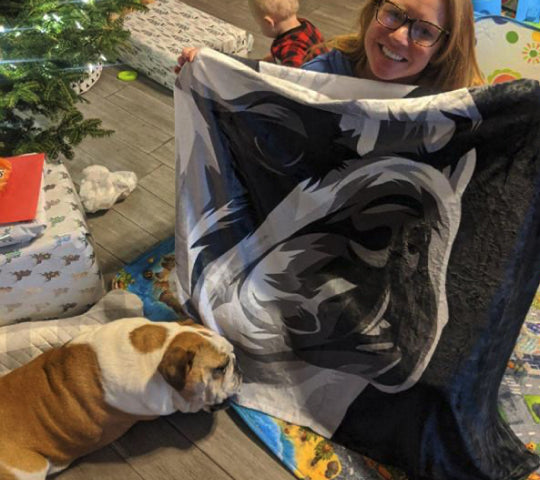
COLLECTION WORTH EVERY PENNY
BEST SELLERS
-
Woofy Single Color Custom Pet Blanket
![Woofy Single Custom Pet Blanket – Woof Blanket]()
- -41%
BlanketsSHOP NOW- Regular price
- from $64.95
- Sale price
- from $64.95
- Regular price
-
$109.95 - Unit price
- per
Sold out -
Summer Time Custom Pet Blanket
![Summer Time Custom Pet Blanket]()
- -39%
BlanketsSHOP NOW- Regular price
- from $69.95
- Sale price
- from $69.95
- Regular price
-
$114.95 - Unit price
- per
Sold out -
Woof Splash Custom Pet Blanket
![Woof Splash Custom Pet Blanket]()
- -39%
BlanketsSHOP NOW- Regular price
- from $69.95
- Sale price
- from $69.95
- Regular price
-
$114.95 - Unit price
- per
Sold out -
Exclusive Custom Pet Blanket
![Exclusive Custom Pet Blanket]()
- -39%
BlanketsSHOP NOW- Regular price
- from $69.95
- Sale price
- from $69.95
- Regular price
-
$114.95 - Unit price
- per
Sold out -
The Admiral - Custom Pet Portrait
![The Admiral - Custom Pet Portrait Online]()
- NEW
- -25%
CanvasSHOP NOW- Regular price
- from $59.95
- Sale price
- from $59.95
- Regular price
-
$79.95 - Unit price
- per
Sold out -
Woof Love Custom Pet Blanket
![Woof Love Custom Pet Blanket]()
- -39%
BlanketsSHOP NOW- Regular price
- from $69.95
- Sale price
- from $69.95
- Regular price
-
$114.95 - Unit price
- per
Sold out -
The Ambassador - Custom Pet Portrait
![The Ambassador - Custom Pet Portrait Online]()
- NEW
- -25%
CanvasSHOP NOW- Regular price
- from $59.95
- Sale price
- from $59.95
- Regular price
-
$79.95 - Unit price
- per
Sold out -
Cartoonized Pet Portraits (New)
![Cartoonized Pet Custom Portraits Online]()
- -36%
SHOP NOW- Regular price
- from $59.95
- Sale price
- from $59.95
- Regular price
-
$93.95 - Unit price
- per
Sold out -
Modern Pet Portraits
![Cute Dog Modern Pet Portraits Online]()
- NEW
- -36%
CanvasSHOP NOW- Regular price
- from $59.95
- Sale price
- from $59.95
- Regular price
-
$93.95 - Unit price
- per
Sold out -
The Classy Lady - Custom Pet Portrait
![The Classy Lady]()
- NEW
- -25%
CanvasSHOP NOW- Regular price
- from $59.95
- Sale price
- from $59.95
- Regular price
-
$79.95 - Unit price
- per
Sold out -
The Duke - Custom Pet Portrait
![The Duke - Custom Pet Portrait]()
- NEW
- -25%
CanvasSHOP NOW- Regular price
- from $59.95
- Sale price
- from $59.95
- Regular price
-
$79.95 - Unit price
- per
Sold out -
4th of July Custom Pet Blanket
![4th of July Custom Pet Blanket Online]()
- NEW
- -39%
BlanketsSHOP NOW- Regular price
- from $69.95
- Sale price
- from $69.95
- Regular price
-
$114.95 - Unit price
- per
Sold out -
Dog In Suit- Custom Pet Portrait
![Dash Dog In Suit- Custom Pet Portrait Online]()
- NEW
- -25%
CanvasSHOP NOW- Regular price
- from $59.95
- Sale price
- from $59.95
- Regular price
-
$79.95 - Unit price
- per
Sold out -
Christmas Custom Pet Blanket
![Christmas Custom Pet Blanket - Custom Dog Blankets]()
- -40%
BlanketsSHOP NOW- Regular price
- from $69.95
- Sale price
- from $69.95
- Regular price
-
$115.95 - Unit price
- per
Sold out -
The Princess - Custom Pet Portrait
![]()
- NEW
- -25%
CanvasSHOP NOW- Regular price
- from $59.95
- Sale price
- from $59.95
- Regular price
-
$79.95 - Unit price
- per
Sold out -
Fall In Love Custom Pet Blanket
![Fall In Love Custom Dog Blanket]()
- NEW
- -39%
BlanketsSHOP NOW- Regular price
- from $69.95
- Sale price
- from $69.95
- Regular price
-
$114.95 - Unit price
- per
Sold out -
Halloween Custom Pet Blanket
![Halloween Custom Cat Blanket]()
- NEW
- -39%
BlanketsSHOP NOW- Regular price
- from $69.95
- Sale price
- from $69.95
- Regular price
-
$114.95 - Unit price
- per
Sold out -
Modern Pet Portrait with One Mug
![Modern Pet Portrait with One Mug]()
- -25%
Print MaterialSHOP NOW- Regular price
- from $99.95
- Sale price
- from $99.95
- Regular price
-
$133.95 - Unit price
- per
Sold out -
The Aristocrat - Custom Pet Portrait
![The Aristocrat - Custom Pet Portrait At Best Price]()
- NEW
- -25%
CanvasSHOP NOW- Regular price
- from $59.95
- Sale price
- from $59.95
- Regular price
-
$79.95 - Unit price
- per
Sold out -
Single Color Custom Blanket with 1 Mug
![Single Color Custom Blanket with 1 Mug]() BlanketsSHOP NOW
BlanketsSHOP NOW- Regular price
- from $99.95
- Sale price
- from $99.95
- Regular price
-
- Unit price
- per
Sold out -
Single Color Custom Blanket with 2 Pillows
![Single Color Custom Pet Blanket with 2 Pillows]()
- -21%
BlanketsSHOP NOW- Regular price
- from $99.95
- Sale price
- from $99.95
- Regular price
-
$125.95 - Unit price
- per
Sold out -
The Dog in Suit Custom Pet Mug
![]()
- -20%
MugsSHOP NOW- Regular price
- $39.95
- Sale price
- $39.95
- Regular price
-
$49.95 - Unit price
- per
Sold out -
Angel Custom Pet Mug
![]()
- -20%
MugsSHOP NOW- Regular price
- $39.95
- Sale price
- $39.95
- Regular price
-
$49.95 - Unit price
- per
Sold out -
This Human Belongs To - Custom Pet Mug
![]()
- NEW
- -20%
MugsSHOP NOW- Regular price
- $39.95
- Sale price
- $39.95
- Regular price
-
$49.95 - Unit price
- per
Sold out -
It's Not Dog Hair Custom Pet Mug
![]()
- NEW
- -20%
MugsSHOP NOW- Regular price
- $39.95
- Sale price
- $39.95
- Regular price
-
$49.95 - Unit price
- per
Sold out -
My Dog Is My Valentine Custom Pet Mug
![]()
- NEW
- -20%
MugsSHOP NOW- Regular price
- $39.95
- Sale price
- $39.95
- Regular price
-
$49.95 - Unit price
- per
Sold out -
3 Photos With Message Custom Pet Mug
![]()
- NEW
- -20%
MugsSHOP NOW- Regular price
- $39.95
- Sale price
- $39.95
- Regular price
-
$49.95 - Unit price
- per
Sold out -
My Valentine Has Four Legs- Personalized Mugs
![]()
- NEW
- -20%
MugsSHOP NOW- Regular price
- $39.95
- Sale price
- $39.95
- Regular price
-
$49.95 - Unit price
- per
Sold out -
Dog Mamma Custom Pet Coffee Mug
![]()
- -20%
MugsSHOP NOW- Regular price
- $39.95
- Sale price
- $39.95
- Regular price
-
$49.95 - Unit price
- per
Sold out -
Uncle Sam - Custom Pet Portrait
![]()
- NEW
- -25%
CanvasSHOP NOW- Regular price
- from $59.95
- Sale price
- from $59.95
- Regular price
-
$79.95 - Unit price
- per
Sold out
